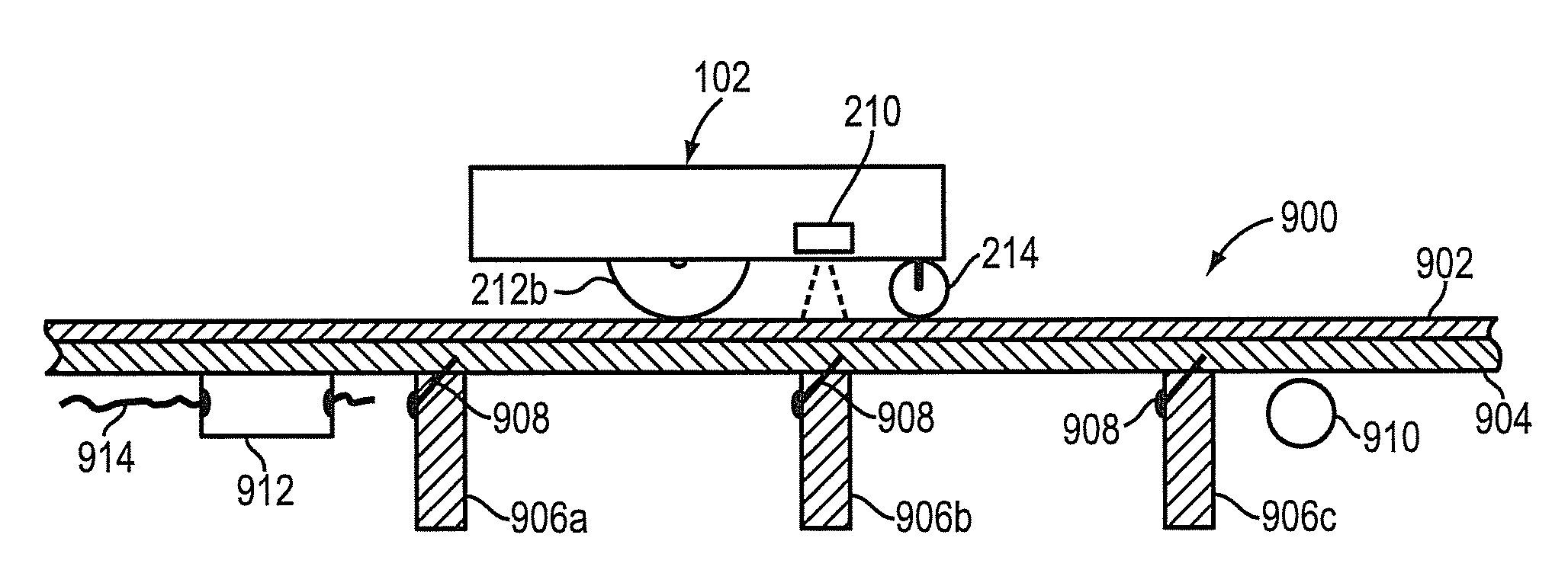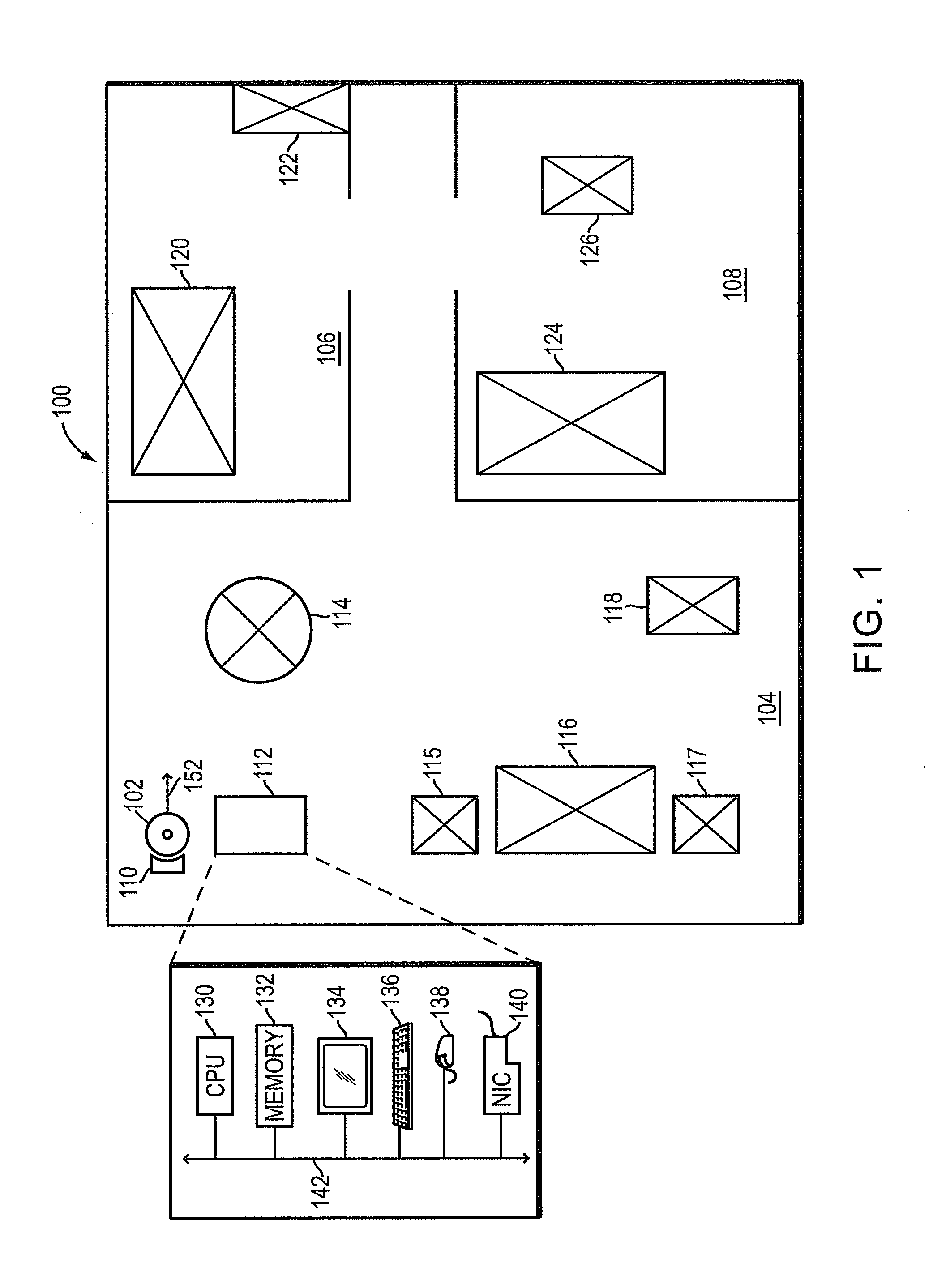User-assisted robot navigation system
a robot and navigation system technology, applied in the field of robot navigation system, can solve the problems that robots still fail to efficiently and thoroughly perform their respective operations, and achieve the effect of efficiently navigating a spa
- Summary
- Abstract
- Description
- Claims
- Application Information
AI Technical Summary
Benefits of technology
Problems solved by technology
Method used
Image
Examples
Embodiment Construction
[0022]Environment
[0023]FIG. 1 is a top view of a space 100 to be navigated by a mobile robot 102. The space 100, which may correspond to a floor of a multistory house, includes a first room 104, a second room 106 and a third room 108. A robot docking station 110 and a robot management station 112 are disposed within the first room 104. The robot docking station 110 may be located adjacent to or otherwise in close proximity to the robot management station 112. The robot 102 may interface, e.g., plug into, the docking station 110, e.g., for recharging its battery. Within each room 104-108 are one or more obstacles. The obstacles may represent furniture or other objects disposed within the respective room. Specifically, within the first room 104 are obstacles 114-118. It should be understood that the management station 112, which may be disposed on a desk, and the docking station 110 may also constitute obstacles to the robot 102. Within the second room 106 are obstacles 120 and 122. W...
PUM
 Login to View More
Login to View More Abstract
Description
Claims
Application Information
 Login to View More
Login to View More - R&D
- Intellectual Property
- Life Sciences
- Materials
- Tech Scout
- Unparalleled Data Quality
- Higher Quality Content
- 60% Fewer Hallucinations
Browse by: Latest US Patents, China's latest patents, Technical Efficacy Thesaurus, Application Domain, Technology Topic, Popular Technical Reports.
© 2025 PatSnap. All rights reserved.Legal|Privacy policy|Modern Slavery Act Transparency Statement|Sitemap|About US| Contact US: help@patsnap.com



